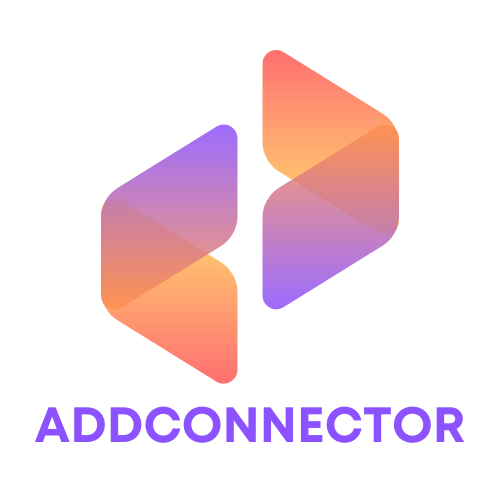In the world of 3D printing, choosing the right filament is like picking the perfect pizza topping—get it right, and you’ve got a masterpiece; get it wrong, and you’re left with a soggy mess. With a dizzying array of filament types available, it can feel like navigating a maze designed by a particularly mischievous engineer. But fear not! This guide will help you cut through the confusion and find the ideal filament for your hardware projects.
Table of Contents
ToggleOverview of Filament Types for Hardware
Filament types play a critical role in 3D printing, influencing durability, flexibility, and ease of use. PLA represents one of the most common options. This material offers excellent printability and eco-friendliness, making it ideal for beginners and educational projects.
ABS provides another popular choice, known for its strength and temperature resistance. Users often select ABS for applications that require sturdiness and long-lasting durability. PETG stands out for its impressive adhesion properties and resistance to impact. Many choose PETG for functional prototypes and hardware components that endure stresses.
Nylon presents a different angle with its superior flexibility and resilience. This filament suits projects requiring a combination of lightweight design and high performance. TPU offers an entirely different characteristic, featuring excellent elasticity. Those working on designs that necessitate rubber-like materials often turn to TPU.
ASA, similar to ABS, provides UV resistance, making it favorable for outdoor applications. Users appreciate ASA for its dimensional stability and ability to withstand extreme conditions. HIPS, known for its compatibility with ABS, serves as a support material, allowing for complex geometries in printing.
PVA, a water-soluble filament, also supports intricate designs. This option enables users to create complex shapes without worrying about material removal. Each filament type delivers unique attributes that cater to specific hardware needs. Understanding these differences empowers users to choose the right filament for their projects.
Common Filament Types
Selecting the right filament significantly influences the outcome of 3D printing projects. Various filament types feature distinct properties suited for different applications.
PLA: A Beginner’s Choice
PLA excels in printability and ease of use for beginners. Eco-friendly and made from renewable materials, it offers an appealing option for those starting in 3D printing. Prints made with PLA exhibit a smooth finish and vibrant colors. Common applications include prototypes, decorative items, and educational models. Its low warping tendency ensures reliable results without the need for heated beds.
ABS: Strong and Durable
ABS provides superior strength and resilience in printed objects. This filament withstands higher temperatures than many alternatives, making it suitable for functional parts. Applications often include automotive components, electronic casings, and toys. While it can emit fumes during printing, proper ventilation mitigates concerns. Post-processing with sanding or acetone allows for a polished surface finish.
PETG: The Best of Both Worlds
PETG combines the best features of PLA and ABS, offering strength alongside ease of printing. This versatile filament boasts excellent adhesion properties and impact resistance. It works well for functional prototypes and parts requiring durability. Hydrophobic characteristics prevent moisture absorption, contributing to longevity. Users appreciate PETG’s minimal warping and chemical resistance, further enhancing its practicality.
Specialty Filaments
Specialty filaments offer unique properties that expand the capabilities of 3D printing. These materials cater to specific requirements, enhancing the performance and functionality of printed objects.
Nylon: Versatile and Tough
Nylon excels in strength and durability, making it a popular choice for various applications. This filament boasts resistance to wear, chemicals, and temperature fluctuations. Printability remains a key benefit, as it adheres well to build surfaces and provides excellent layer bonding. Users favor it for creating functional parts, such as mechanical components and prototypes. Nylon’s ability to withstand stress and strain makes it ideal for items requiring flexibility and toughness.
TPU: Flexible and Rubber-like
TPU stands out for its impressive elasticity and flexibility, resembling rubber. Users appreciate its ability to bend and stretch without breaking, which is essential for specific applications like phone cases and wearable devices. The ease of printing with TPU allows for intricate designs while preserving its impressive structural integrity. Many opt for this filament when creating items requiring shock absorption and excellent grip. Its properties make TPU suitable for a variety of projects, from automotive parts to fashion accessories.
Choosing the Right Filament
Selecting the appropriate filament hinges on various factors that enhance the 3D printing experience. Users must evaluate printability, strength, and the intended application when narrowing down options.
Factors to Consider
Printability affects workflow significantly. Choose filaments that align with the printer’s capabilities and settings. Strength is crucial for durability; materials like ABS and Nylon provide enhanced robustness for demanding tasks. Temperature resistance also comes into play, particularly with materials like ASA, which functions well in outdoor settings. Eco-friendliness appeals to conscientious users. Opt for PLA if environmental considerations drive the selection.
Applications and Use Cases
Different filaments shine in specific applications. For instance, PLA suits prototypes and decorative items due to ease of printing. ABS finds its place in automotive components because of its durable nature. When functional prototypes demand both strength and adhesion, PETG proves beneficial. Specialists and hobbyists frequently use Nylon for robust tools, while TPU’s flexibility makes it ideal for shock-absorbing applications like phone cases. Each filament type meets distinct needs based on performance and functionality.
Conclusion
Selecting the right filament is crucial for achieving successful 3D prints. With a variety of options available each suited for different applications understanding their unique properties can greatly enhance project outcomes. Whether it’s the beginner-friendly PLA or the robust Nylon every filament type offers distinct advantages that cater to specific needs.
By considering factors like printability strength and intended use users can make informed decisions that align with their hardware capabilities. This knowledge not only simplifies the selection process but also empowers creators to unlock the full potential of their 3D printing endeavors. With the right filament in hand they can bring their innovative ideas to life.



